Thomas Doty – Storyteller
|
|
At Koomookumpts' Bed
Koomookumpts is both creator and trickster of the Modocs, and his name means, "Ancient Old Man." The stone bench that is his bed is at the top of a rock at the center of the Modoc universe. This rock was once an island in Tule Lake, and on modern maps it is called Petroglyph Point. Over a span of centuries, native people carved stories from canoes into the rock, an ancient narrative that stretches more than a quarter mile along the western base of the cliff. Some images portray historical events, some dramatize ancient myths, some are the abstract dreams and visions of medicine people who climbed to the top and spent five days and nights in Koomookumpts' Bed. There are even older symbols on the east side. I first climbed the rock in 1964. I was 11 years old. And I have returned in every season for years and years.
The photos show the bed at the top, taken quite a few years ago. Note the symbol that shows the ravines that Koomookumpts carved down the slopes of Mount Shasta to direct water into the basin, filling Tule Lake. You can see it in one of the photos, just above my head.
Most vision quest sites face east, toward the rising sun, toward the beginning. This one faces west. This is not because it is trying to connect to the western Land of the Dead. It is because this particular site is part of the creation story, and this bed is where Koomookumpts went to sleep after making the world by scooping up mud from the bottom of the lake. Some say he'll wake up soon, see that his lake has been mostly drained, and he'll bring the water back, making the world as it once was, and his rock an island once again. From the bed, you can see Sheepy Ridge along the western shore of what's left of the the lake, grooved with the work of Koomookumpts' fingernails to keep the water flowing -- not so much these days -- and Mount Shasta rising huge and white beyond that. When you sit here, you have an expansive view of a big part of the Modoc world.
I've also included a photo of a completeness symbol that is carved into the cliff above the bed. It looks like a rope with the ends tied together. This reminds us that this vision quest site is where people go to become complete. When you tie the ends of a rope, it is transformed from a straight line -- fairly meaningless in our native world view -- into a circle that mirrors the circles of the sun and moon, our sacred circle dances, the circle we sit in listening to stories, fire rings, teepees, hogans, igloos, a cycle of seasons circling through the year.... As expressed by wise folks from Black Elk ("The power of the world always works in circles, and everything tries to be round") to Harry Chapin ("All my life's a circle"), circles and cycles truly make up our lives. When we acknowledge that, and walk that path, we become complete.
In the Modoc language, liutatka means to gather in a circle. Gelidanka. Welcome to my home.
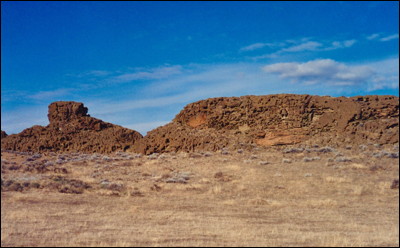
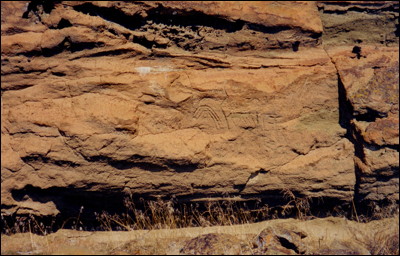
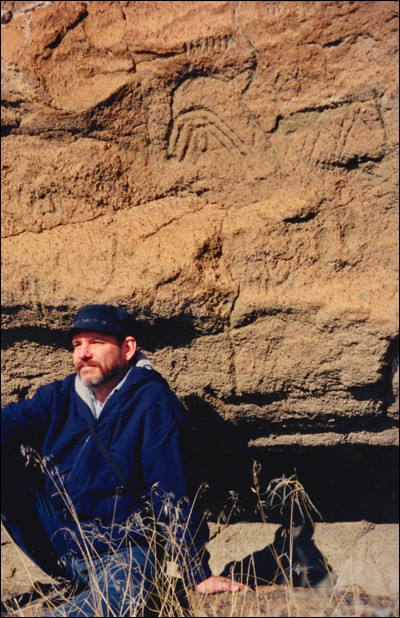
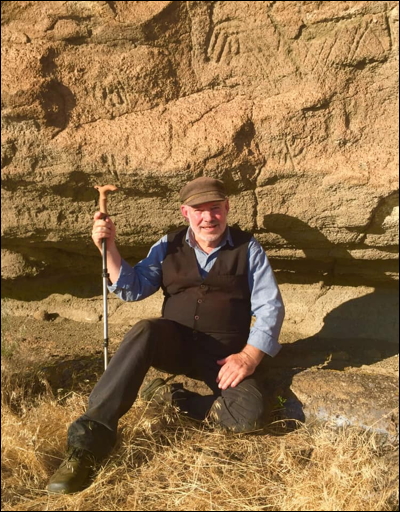
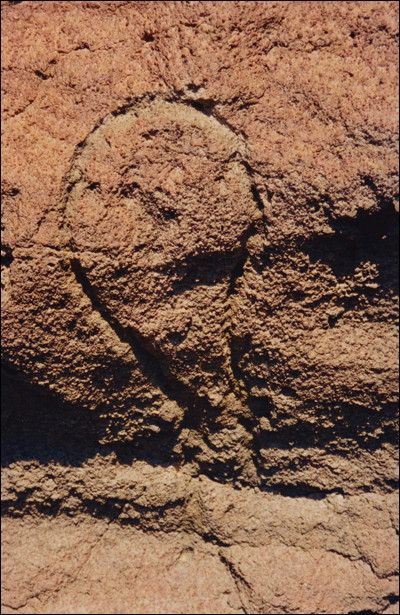

Photo Credits | Privacy | Donate
Website © 1997-
by Thomas Doty.

